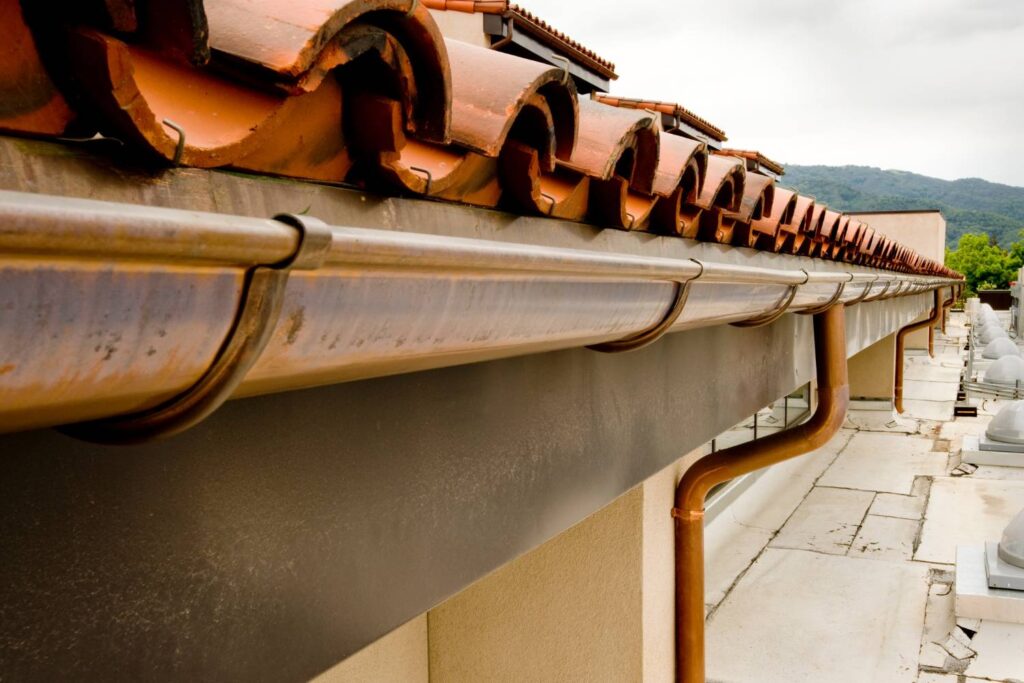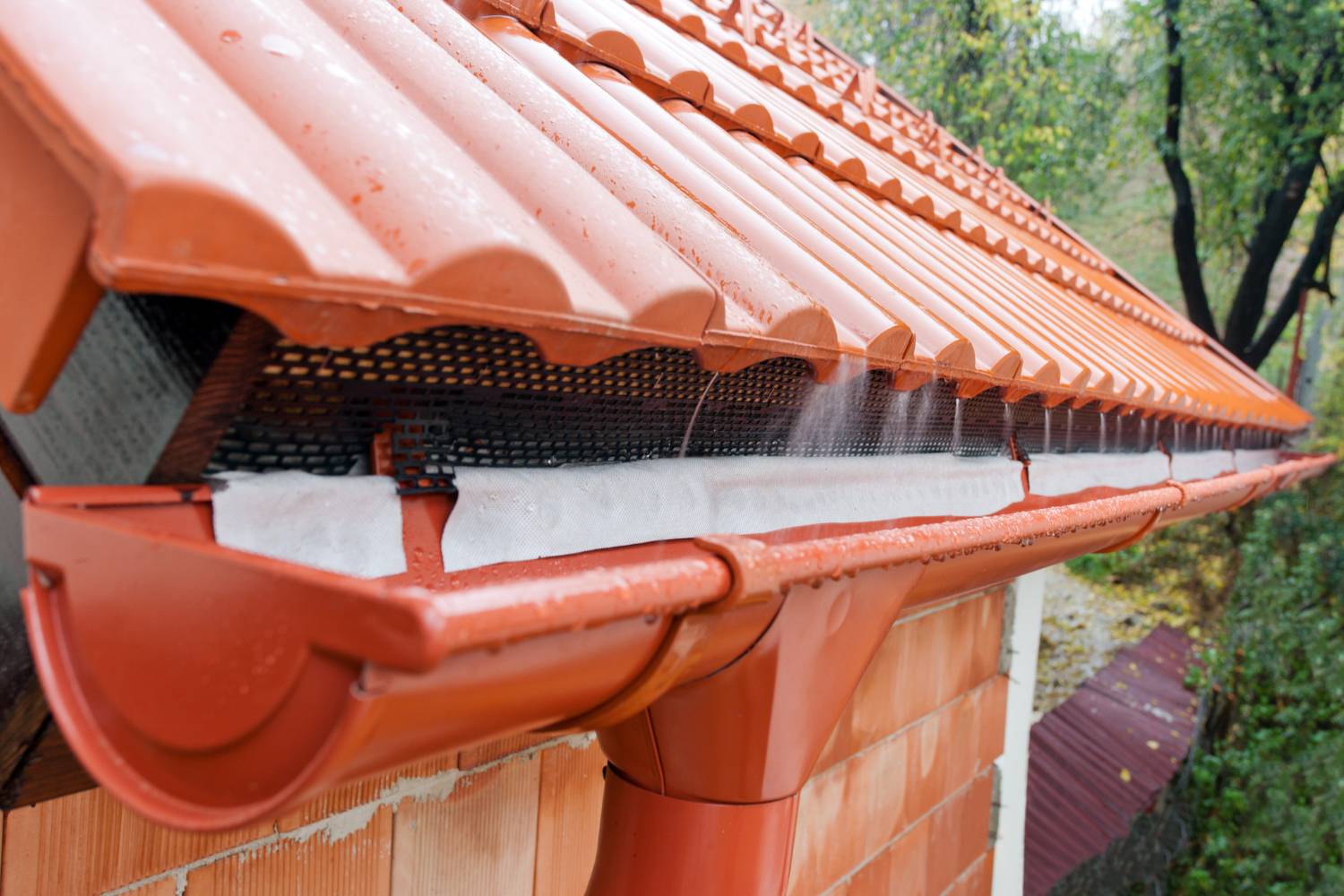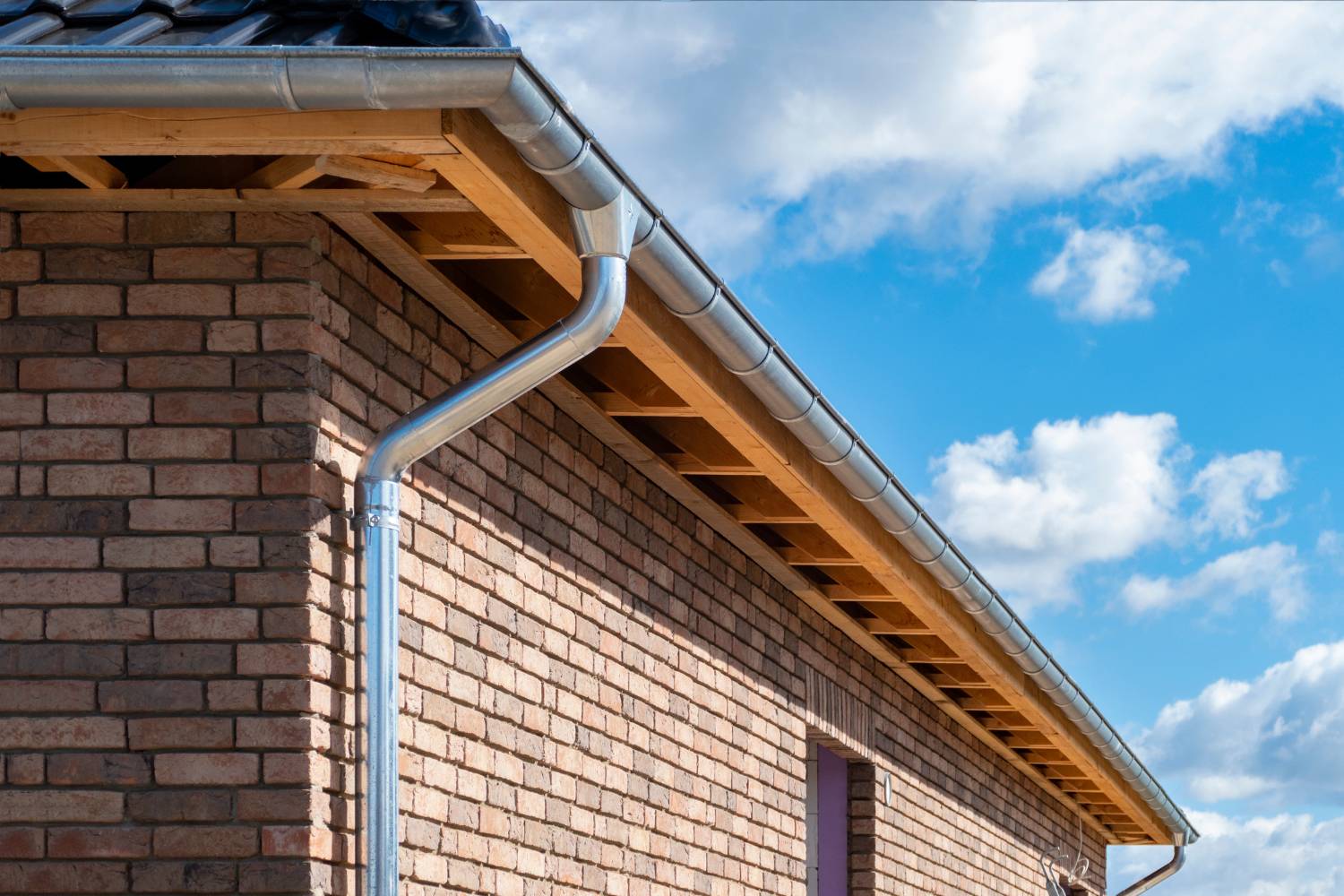Guttering is a crucial component of any home's drainage system, playing a vital role in preventing water damage to the foundation, roof, and walls. One of the most important factors that determine the efficiency of a gutter system is its pitch or slope. Ensuring that gutters are correctly pitched is essential for effective water drainage and the long-term protection of your property.
Maintaining the correct gutter pitch is key to a durable and efficient gutter system. Regular inspections and adjustments can prevent common problems like pooling, overflow, and structural damage. By following the guidelines outlined in this article, homeowners can ensure their gutters provide effective protection against water damage, enhancing the longevity and aesthetic appeal of their homes.
The Concept of Gutter Pitch
Understanding and maintaining the correct gutter pitch is essential for the health and durability of your home. Regular inspections and adjustments can help prevent common issues associated with improper gutter pitch. By following the best practices outlined above, homeowners can ensure their gutter systems effectively protect their properties from water damage.
Maintaining the correct gutter pitch is vital for efficient water drainage and protecting your home from potential water damage. Regular checks and adjustments can help sustain an effective gutter system, ensuring longevity and reducing maintenance costs.
Gutter pitch, also known as gutter slope, is a crucial aspect of any gutter system, ensuring efficient water drainage away from a building. Without a proper gutter pitch, water can pool, causing leaks, overflows, and potential damage to the structure. This article delves into the concept of gutter pitch, its importance, and best practices for maintaining an effective gutter system.
What is a Gutter Pitch?
Gutter pitch refers to the gentle slope installed in gutters to guide water towards downspouts. It ensures efficient drainage by preventing water from pooling or overflowing. This slope, typically subtle, is designed to be almost parallel to the roofline when viewed from a distance.
Measurement of gutter pitch is commonly expressed in terms of inches per foot or millimetres per metre. For instance, a standard pitch might be 1/4 inch per foot, meaning the gutter drops 1/4 inch for every foot of its length.
Maintaining the correct gutter pitch is crucial for several reasons. Firstly, it facilitates efficient water flow, directing rainwater towards downspouts to prevent standing water that could lead to leaks or gutter damage. Secondly, it protects the building structure by preventing water from accumulating, which could otherwise cause issues such as roof leaks, wall damage, or foundation problems.
Additionally, achieving an appropriate gutter pitch strikes a balance between functionality and aesthetic appeal. While it ensures optimal drainage, the slope is subtle enough not to compromise the building's overall appearance. This dual functionality enhances both the practical and visual aspects of gutter installation.
Common Problems with Incorrect Gutter Pitch
Incorrect gutter pitch can lead to several significant problems that affect the overall functionality and longevity of your gutter system.
One common issue is pooling and overflow during heavy rain. When gutters are not pitched correctly, water accumulates in certain spots, causing pooling. This pooling can then overflow the gutters, leading to water cascading down the sides of your home rather than being directed away.
Another critical issue is blockages caused by debris accumulation. Leaves, twigs, and other debris are more likely to build up in gutters that are improperly pitched. This accumulation can obstruct the flow of water, further exacerbating overflow problems and potentially causing water damage to your home's exterior.
Moreover, structural damage is a long-term consequence of improper gutter pitch. Standing water in gutters can gradually deteriorate the gutter system itself, as well as the roof and foundation of your home. This damage can be costly to repair and may compromise the integrity of your property over time.
Addressing these issues requires ensuring that your gutters are correctly pitched to effectively channel water away from your home, preventing pooling, overflow, blockages, and structural damage. Regular maintenance and inspection can help identify and rectify any pitch-related issues before they lead to more extensive problems.
Best Practices for Gutter Pitch
Maintaining the correct pitch in your gutter system is crucial for effective water management and prolonging its lifespan. The recommended slope is typically 1/4 inch for every 10 feet of guttering, ensuring efficient drainage.
It's important to slope gutters towards downspouts to prevent water accumulation, which could otherwise cause issues in the gutter system. Regular inspections using a level help to detect and correct any pitch problems promptly, ensuring the gutters continue to function effectively.
A well-pitched gutter system offers several benefits. It enhances longevity by reducing the likelihood of damage and the need for frequent maintenance. Effective water management ensures that water is directed away from the building, protecting the roof, walls, and foundation from potential water damage. This proactive approach also minimises maintenance costs by lowering the risk of blockages and structural issues, thus reducing repair expenses over time.
Standard Pitch for Guttering
Maintaining the correct pitch for your gutters is crucial for protecting your home from water damage. Regular inspections and maintenance can prevent common problems associated with improper gutter pitch. By ensuring that your gutters have the standard slope, you can enhance their efficiency and extend their lifespan, safeguarding your property from potential water-related issues.
A properly pitched gutter system is essential for effective water drainage and the protection of your home. Regular maintenance and professional adjustments ensure that your gutters remain functional and efficient, preventing costly repairs and preserving the structural integrity of your house.
Guttering is an essential component of any home's drainage system. Properly installed gutters prevent water damage to the foundation, roof, and walls of a house. One of the critical factors that determine the efficiency of a gutter system is the pitch or slope. This article explores the standard pitch for guttering, its importance, and how to maintain it for optimal performance.
How to Measure and Adjust Gutter Pitch
Maintaining the correct gutter pitch is essential for effective water drainage and protecting your home from water damage. Regular inspections and adjustments can prevent common issues associated with improper gutter pitch. By following these steps, you can ensure your gutter system remains functional and efficient, safeguarding your property from potential water-related problems.
Properly pitched gutters are crucial for effective water management and the longevity of your home. Regular maintenance and adjustments will ensure your gutters perform optimally, preventing costly repairs and protecting your home's structure.
Proper gutter pitch is essential for effective water drainage from your roof, protecting your home's structure and foundation. An incorrect slope can lead to water pooling, overflow, and damage. This guide provides detailed steps on how to measure and adjust gutter pitch to ensure your gutter system functions optimally.
Measuring Gutter Pitch
To determine whether your gutters are correctly pitched, start with an initial inspection from the ground. Look for signs of water overflow or pooling, marking these spots for adjustment later.
Next, measure the slope of the gutter:
- Begin at the end farthest from the downspout.
- Measure the distance from the bottom of the gutter to the fascia board and note it.
- Move to the downspout end and measure again, adding 1/4 inch for every 10 feet of gutter length.
- Use a level to confirm that the gutter drops 1/4 inch per 10 feet. Make adjustments as needed.
If adjustments are necessary:
- Gather your tools: ladder, drill, screws, hangers, and sealant.
- Adjust the hangers:
- Loosen the screws holding the gutter hangers.
- Reposition them to achieve the correct pitch.
- Tighten the screws securely.
- Seal joints and seams:
- Clean these areas to remove debris.
- Apply silicone caulk or gutter sealant to prevent leaks.
- Smooth the sealant for even coverage.
- Double-check the slope with a level after making adjustments.
- Test the gutters by running water through them to ensure proper drainage and checking for leaks or pooling.
By following these steps, you can effectively measure and adjust the pitch of your gutters to ensure optimal performance.
Conclusion
Maintaining the correct pitch for your gutters is essential for the efficient management of rainwater and the overall protection of your home. A well-pitched gutter system ensures that water flows smoothly towards the downspouts, preventing issues like pooling, overflow, and structural damage. By understanding the importance of gutter pitch and following the best practices outlined in this guide, homeowners can enhance the longevity and functionality of their gutter systems.
Regular inspections and timely adjustments can keep your gutters in optimal condition, reducing the risk of costly repairs and maintaining the aesthetic appeal of your property. Whether you choose to tackle gutter maintenance yourself or hire professionals, ensuring that your gutters have the proper pitch is a critical step in safeguarding your home against water damage. Embrace these guidelines to protect your investment and enjoy the peace of mind that comes with a well-maintained gutter system.
Frequently Asked Questions
The standard pitch for guttering is typically 1/4 inch per foot of gutter length. This means every foot of the gutter should slope downwards by 1/4 inch towards the downspouts to ensure efficient water drainage.
Maintaining the correct gutter pitch is crucial for preventing water pooling, overflows, and structural damage. Proper pitch ensures water flows smoothly towards the downspouts, protecting the foundation, roof, and walls from water damage.
To check the gutter pitch, use a level and measure from the far end of the gutter to the downspout. The slope should be approximately 1/4 inch per foot. Mark any areas with improper pitch and adjust the gutter position accordingly.
Incorrect gutter pitch can lead to water pooling in the gutters, causing overflows during heavy rain, blockages from debris, and structural damage due to the weight of standing water. Over time, this can result in leaks, gutter warping, and damage to the roof and foundation.
Minor adjustments to the gutter pitch can be done yourself using basic tools like a level, ladder, and screws. However, for significant adjustments or installations, it's advisable to hire professional gutter services to ensure the job is done correctly and safely.


